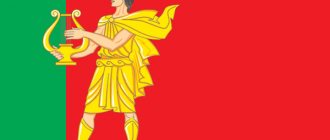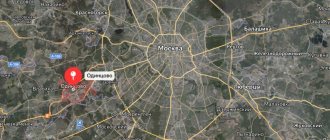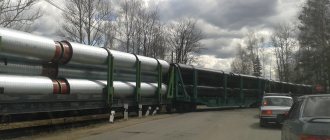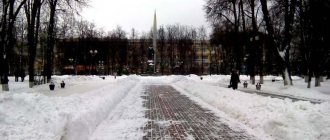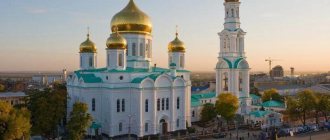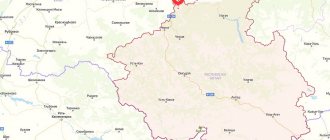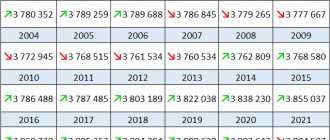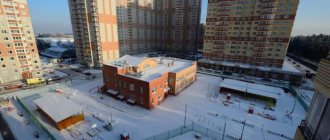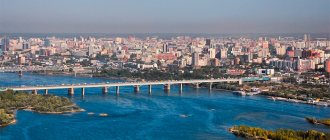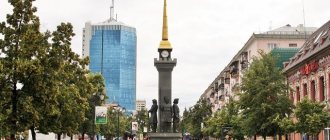Pages of history
THE BEGINNING of the construction of the energy giant in the 60s became a matter of national importance due to, as the energy industry puts it, “a shortage of electrical power in the center of the European part of Russia.” As usual, there were corresponding decisions of the party and government. In accordance with them, on August 14, 1962, the Ministry of Power Plant Construction made a decision on the construction of the Verkhne-Volzhskaya State District Power Plant (as Kostroma State District Power Plant was originally called).
But even earlier, an engineering and survey team of the Gorky branch of the All-Union State Design Institute “Teploproekt” appeared at the site of the proposed construction: geologists, hydrologists, biologists, surveyors, drillers, led by M. N. Zayakin (then N. S. Shakirov) and N. A. Nikolai. On the left bank of the Shachi, they first set up tarpaulin tents, and then panel houses. The pioneer base of prospectors was called the Village of Geologists. Later it became part of Volgorechensk.
Geologists took soil samples; hydrologists determined the speed and direction of the Volga flow for each season, measured every meter of the bottom; biologists studied the “life” of the aquatic area; surveyors were surveying the area.
“The summer of 1962 was rainy,” recalls M. F. Khlebnikov, surveyor of the engineering and survey team. “Wad boots didn’t help.” We were transported to the “points” on a sleigh attached to a caterpillar tractor. When they drilled a well in the place of the first chimney, they had to make a multi-layer log flooring so that the drilling rig would not be pulled into the swamp.
The general designer prepared technical documentation for the final power plant capacity of 4800 MW. The Council of Ministers of the USSR allowed the construction of only the first stage of 1200 MW (four power units of 300 MW each). The corresponding project was approved in 1967. The government approved the second stage project, also for 1,200 MW (four more power units of 300 MW each), in 1971.
However, the Kostroma State District Power Plant began to be built before the design assignment was approved - in 1963, according to drawings drawn up for priority work.
On June 22, 1963, Order No. 93 of the State Production Committee for Energy and Electrification was issued on organizing the directorate of the Kostroma State District Power Plant under construction, subordinating it to Kostromaenergo. The first director was A.D. Stukovnin. The staff consisted of five people: head of the production and technical department (later - deputy director for capital construction) B.V. Chudov, chief accountant R.F. Tikhonov, technical documentation engineer V.V. Fedorov, secretary-typist M.A. Komarova and two curators - V. A. Ivanov and N. V. Ilatovskaya.
The office of the directorate of the Kostroma State District Power Plant under construction is located in the village. Sidorovsky on the territory of a timber warehouse. The log five-walled building consisted of two rooms: one was occupied by the director; the other housed a staff of engineering and technical workers. B.V. Chudov says: “There was a lot of work: analysis and processing of all incoming technical documentation for the pioneer base, for access roads and railways. Lots of agreements. Financing was provided through Stroybank in Kostroma. We got there by train from Ivanovo to Kostroma, landing at the station. Furmanov or hitchhiking from the village of Sholokhovo, Krasnoselsky district (we walked to the village).
WHAT names did they try to give to the emerging village! In 1964, due to the absence of government bodies, the party bureau took the initiative and built the SU KGRES: on October 9, they sent a letter to the chairman of the Kostroma Industrial Regional Executive Committee A.I. Kurtsev: “The village still has no name. We suggest giving one of the recommended ones...” And then a list: Luchegorsk, Luch, Svetochegorsk, Luchezarny, Yasnogorsky, Energetik and even Svetlyachok. Who came up with the name “Volgorechensk”? There are many versions.
One of them was voiced in his memoirs by V.I. Panov. According to him, they whiled away a working evening with a heart-to-heart conversation. The winter wind whipped against the plank walls of the trailer, dusting the paths trampled by hundreds of feet with stinging snow. It was warm because of the crowds. They started singing: “Volga-river...”. And immediately someone exclaimed: “So this is what we can call our village - Volgorechensk!” The name of the one who said this is not etched in my memory. But I liked the name and remembered it.
On October 15, 1964, the executive committee of the regional (industrial) Council of Workers' Deputies, by its decision No. 561, registered “a settlement that arose during the construction of the Kostroma State District Power Plant in the territory of the Kostroma district of the Kostroma region, called Volgorechensk.”
In a letter sent to the Presidium of the Supreme Soviet of the RSFSR, the chairman of the regional executive committee writes: “The construction of the Kostroma State District Power Plant is being carried out in an area remote from the administrative centers and cut off from them by the Volga River and the Shacha River. The absence of a local government body has a negative impact on cultural and everyday services for builders...” The author of the letter requests from the higher government body staff for the future village Council of Workers’ Deputies in the amount of 8 units.
On November 1, 1964, an executive committee consisting of 5 people was created as a temporary governing body (until the elections of deputies to the village Council): N.S. Volkov (chairman), V. A. Egorov (deputy chairman), L. P. Baranova (secretary), A. V. Telnov, I. N. Simonov. The main responsibility of the members of the executive committee was civil registration. At the same time, preparations were made for elections to the village Council of Workers' Deputies, scheduled for March 1965. The first among the workers' deputies in the village government were N.S. Volkov, L.N. Sundukov, A.N. Kozlov, R.A. Valeev, I.A. Smirnov, V.P. Anisimov, G.N. Sazonova and others. The Village Council became subordinate to the Kostroma City Council of Workers' Deputies.
At the request of the village Council, in April 1965, by Decree of the Presidium of the Supreme Soviet of the RSFSR, the village was given the name Volgorechensk.
In 1964, the first newborns appeared in the village. On August 3, a daughter, Svetlana, was born to Alexander Ivanovich and Tatyana Gennadievna Zyatkov. The place of registration of the girl was the Krasnoselsky registry office, where on September 11, 1964 the corresponding entry was made under No. 59. The village of Volzhsky was recorded as the place of birth.
On October 8, 1964, a son, Igor, was born to Konstantin Ivanovich and Alexandra Anatolyevna Kosterin. The fact of birth was registered by the Krasnoselsky registry office on November 13 under No. 71 (the village of Kostroma State District Power Plant is designated as the place of birth of the baby).
The first newborn registered by the executive committee of the Volgorechensky Village Council was Sergei Zhukov, born on January 9, 1965 to Alexander Ivanovich and Nina Alekseevna Zhukov (actual record No. 1 of January 20, 1965). Activity record No. 2 dated February 3, 1965 certifies the birth of the girl Oksana on January 18, 1965 to Vladimir Nikolaevich and Zinaida Antonovna Podolsky.
In the 60s, twins appeared in the families of the Zhurkins, Rublevs, Golubevs, Gulyaevs, Kalinins, Zhigalovs, Talamanovs and Filippovs. At first, the Vladimir section of the Mosenergostroy trust (head of the section A.I. Ryzhenkov) acted as the general contractor. Then the volumes were transferred to the newly organized trust “Tsentrenergostroy”. On the initiative of the chief engineer of the trust, I. B. Kopelyan, a construction management of the Kostroma State District Power Plant was organized. On August 30, 1963, the corresponding order of the State Production Committee for Energy and Electrification of the USSR No. 52/a was issued.
The office of SU KGRES is located in Privolzhsk.
Volgorechensk today
More than forty years have passed since the founding of our city. Volgorechensk is a young city, its history is not as ancient as that of other cities in the Kostroma region, but it has already left its mark both in the life of the region and in the life of the entire country.
Our city currently produces about twenty percent of all industrial production in the region; Volgorechensk has the highest standard of living in the region.
We have something to be proud of: industrial enterprises, which are the basis of the city’s economy, have adapted to new conditions. Thanks to the well-coordinated work of the labor collectives of the Kostromskaya GRES branch of OJSC OGK-3, OJSC Gazpromtrubinvest, CJSC Volga-SFAT and other enterprises, growth in volumes of both industrial production and the consumer market is ensured.
All social institutions operate stably and develop dynamically. Social protection of the city population is one of the main activities of local governments.
We, Volgorechensk residents, love our city and strive for its development. The joint efforts of all residents, their work makes it possible to move on and jointly do everything for the benefit and prosperity of our city and its residents!
General information
Urban district of the city of Volgorechensk, Kostroma region
Quote about the urban district of Volgorechensk:
Under the wing of a white seagull is my native land, my city, the laughter of children, the smell of fresh bread. No centuries behind us, no gray Kremlin, only pipes soared into the sky over the Volga (Z. Chalunina)
Sights of the urban district of Volgorechensk
- At the entrance to Volgorechensk, St. Tikhon's Cathedral rises on a gentle hill. It involuntarily attracts the attention of everyone who drives along the federal highway Kostroma - Ivanovo. The light bulbs of the five-domed structure topped with crosses, the bell tower spire with a gilded crucifix.
- The sculpture of Prometheus, carrying Fire in his palm to people, is installed on the central square of the city, near the municipal cultural institution “Volgorechensk City Cultural Center”.
- The gun is a howitzer from the Great Patriotic War, installed near the military registration and enlistment office.
- Illuminated fountain on the central city square.
- A fragment of the 19th century road (the so-called “Ekaterininka”) leading to the Makaryevskaya Fair.
- The worship chapel is illuminated in memory of the soldiers who died in Afghanistan and Chechnya.
Interesting facts about the urban district of Volgorechensk
- Volgorechensk was the very first city in the Kostroma region to acquire official symbols. In 1999, the city's coat of arms was approved, in 2005 - the city's flag, and in 2006 - the anthem.
- Since 1999, the annual Interregional Festival of Patriotic Songs “Loyal Sons of Russia” has been held in Volgorechensk. Over the 11 years of the festival’s existence, about 3,000 competitors from 13 constituent entities of the Russian Federation took part in it.
- In 2001, the Local History Center was opened in the city. The first hall of the center presents urban and peasant life of the 19th and 20th centuries: a large collection of tools, ceramics, antique furniture, dishes, early printed and handwritten books, photographs. In the second room, drawings, documents and relics reflect the history of the construction of the Kostroma State District Power Plant and Volgorechensk, as well as the history of the surrounding villages. The third hall is an exhibition hall.
- In Volgorechensk, spearfishing competitions are held annually in February.
- The unique fishery is the only full-system warm-water industrial-type fish farm in the northern regions of the Central region, where live fish (carp, Lena and Russian sturgeon, bester) are grown on the warm waste waters of the Kostroma State District Power Plant. The main consumers of the products are trade and catering enterprises in the cities: Kostroma, Ivanovo, Yaroslavl, Moscow.
- St. Tikhon's Cathedral contains pieces of the relics of the Martyrs Gervasius and Protasius, Holy Righteous Anna - the mother of the Most Holy Theotokos, St. John the Merciful, St. Demetrius of Rostov, Holy Righteous Theodore Ushakov Admiral, and St. Leonty Mikhailovsky.
- In Volgorechensk in 1979, on the central square of the city, near the House of Culture, the first sculpture of a naked person in the USSR was installed - Prometheus, 19 meters high. The authors are sculptor A. D. Kazachok and architects V. Azarov and G. Mironov. The sculpture is made in antique style. Approved by the artistic council of the USSR Ministry of Culture. There is fire in Prometheus’s open palm, and he gives it to people. Fire symbolizes energy, life, progress, and the image of Prometheus embodies the ideal of a harmoniously developed personality, the expression of movement, the impulse of a young man who brings joy to people.
Tourist routes of the urban district of Volgorechensk
Considering Volgorechensk as an integral part of the ancient Kostroma land, the staff of the local history department developed excursions not only on the history of the construction of the KGRES, the city, its industrial potential, but also comprehensive excursions with visits to surrounding villages and hamlets with a rich historical past.
- Sightseeing tour of the city, with a visit to the local history department or JSC Volga-SFAT (optional);
- “Resonant gusli, walking kaliki”: visit to St. Tikhon’s Church, the “Svetelka” club (folk costumes, amulets dolls of the Kostroma province of the 18th-19th century), performance of guslars.
- “Living Silver ” - excursion to the Fishery Farm with an interactive program and product tasting (sturgeon, bester, sterlet)
- “The Mysteries of Catherine” - the history of the trade route to the Makaryevskaya Fair, the wishing stone (meeting by a folklore group).
- Contacts of the administration of the urban district of Volgorechensk and the department responsible for tourism development
Complex excursion “Volgorechensk - on the river of time”: historical and local history center, visit to the village. Sidorovskoye (jewelry enterprise), village. Svetocheva Gora (Kazan Church of the early 19th century);
Administration of the city district Volgorechensk St. Named after the 50th anniversary of the Lenin Komsomol, 4, Volgorechensk, Kostroma region 156901 tel. (49453) 5-25-01, tel/fax (49453) 5-25-02, e-mail: [email protected] , official website https://go-volgorechensk.ru OKPO 4169405, OGRN 1024402238420, INN/KPP 4431001782/443101001
Sector of culture, tourism and social development of the administration of the urban district of the city of Volgorechensk
- Lampadova Daria Valerievna, tel/fax (49453) 5-25-19, e-mail: [email protected]
- Department of Economics of the Administration of the Urban District of Volgorechensk
- Kiyanitsa Angela Arifovna
- tel. (49453) 5-25-09
- e-mail: [email protected]
0
Home / SOCIAL SPHERE / Tourism / General information
